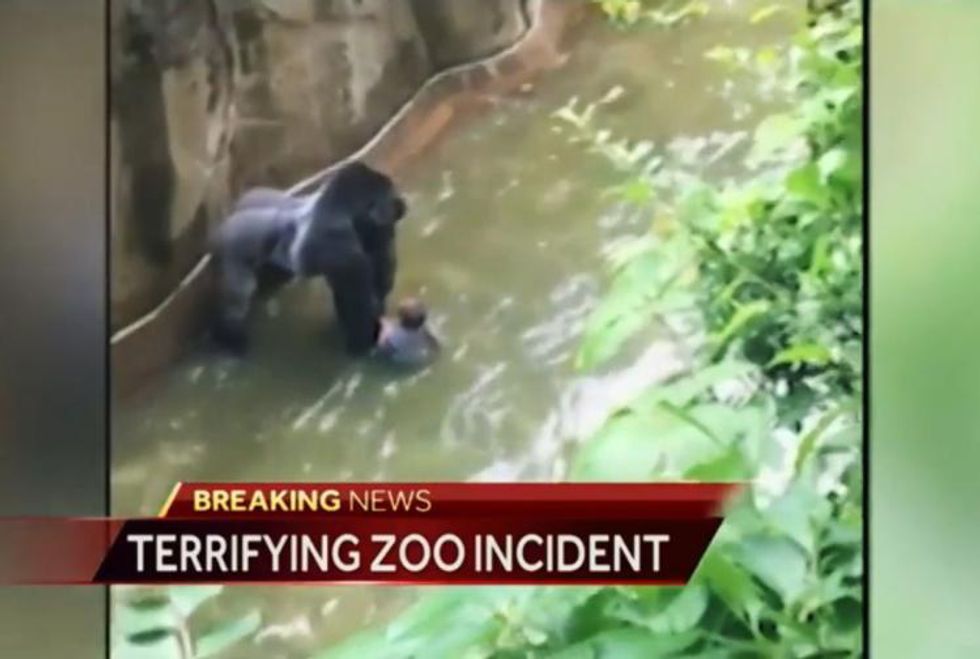Harambe, a 400-pound Western lowland silverback was shot and subsequently killed after a four-year-old child fell into his enclosure. The recent death of the 17-year-old gorilla at the Cincinnati Zoo on Saturday has undoubtedly sparked outrage against both the mother of the child and the zoo itself. Since the incident, many people have voiced their opinions regarding their own thoughts on what happened. Surprisingly, many of the attacks were directed towards the mother of the child, for not watching him closely enough and thus allowing him to wander into Harambe's cage. Others spread negative connotations of the Cincinnati Zoo, claiming that killing Harambe was a rash and unnecessary method of protecting the young child who wouldn't have ended up in the enclosure in the first place if it hadn't been for his "irresponsible" mother.
I have been thinking a lot about the incident during the last few days and I have gone back and forth as far as my own thoughts regarding it are concerned. My initial reaction was remorse that a young animal was killed. However, Harambe was a wild animal, and a wild animal's first instinct is to protect it's home. We cannot blame him for behaving like a wild animal is expected to. In fact, if it were not for zoos and incapacitation, this incident would likely not have happened in the first place. It is unfortunate that an innocent animal was shot as a result of an action that certainly could have been avoided had the mother paid closer attention to her son and prevented him from the eventual predicament.
On the other hand, I can understand why the Cincinnati Zoo eventually came to the decision to kill Harambe. I myself am not a mother, but I can assure that if I were one, and it were my own child in Harambe's cage, all of my feelings that I touched on earlier would go right out the window. Just as I mentioned earlier how it is a wild animal's instinct to protect his environment, it is a parent's initial instinct to protect his or her child, and just as it is wrong to blame Harambe for acting as a wild animal normally would, it is wrong to criticize a parent for panicking while witnessing her young child being dragged underwater by a 400-pound gorilla.
After contemplating all sides of the incident, what bothered me the most was probably the fact that a four-year-old could navigate his way into a gorilla's enclosure. Children are curious and it is their natural instinct to get into things and explore unfamiliar places. However, I would expect that as a safety measure, accessing the entrance to a wild animal's enclosure would be a little bit more difficult to accomplish. Thankfully, since the incident, the Cincinnati Zoo is taking measures to improve the safety of the zoo by increasing the height and strength of the barrier surrounding the gorilla enclosure. It is unfortunate that it took such an event to lead to these positive changes though.
I am so relieved that the child did not suffer from any injuries following the incident, but I am still saddened that Harambe was subsequently killed. However, I do find peace in the fact that the Cincinnati Zoo did not make the decision to kill Harambe lightly. Clearly wild animals can be very unpredictable and dangerous, especially in the unnatural and captive environment that zoos create. This is proven simply by the fact that zoos are required to have specially trained forces to respond in the event of an emergency. At the end of the day, I think it is most important to stop attacking a specific side but rather to use this incident as an opportunity to learn the setbacks of zoos in general and the importance of creating a safe environment for visitors, especially young ones who may not know better.























